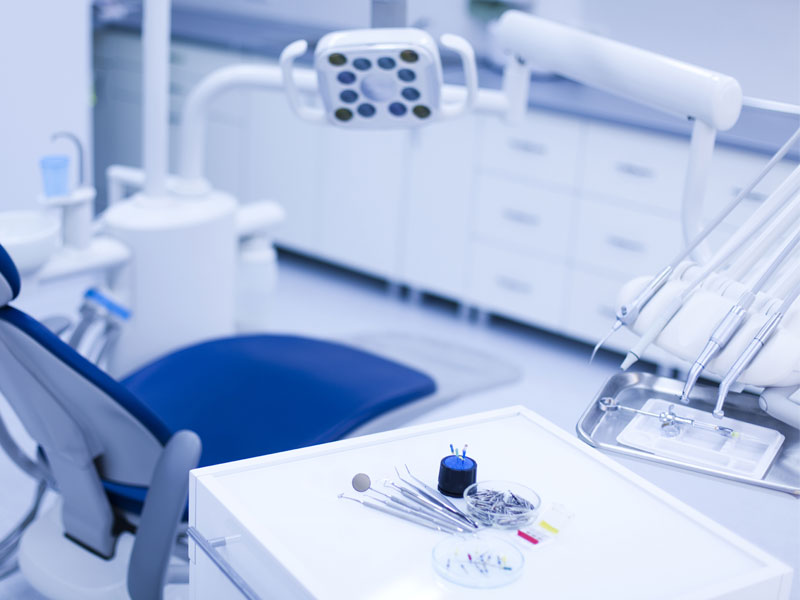
Uses
Doxorubicin is an anthracycline type of chemotherapy that is used to treat several different types of cancer.
Side Effects
Nausea, vomiting, diarrhea, and loss of appetite may occur. Nausea and vomiting can be severe.
Precautions
This product may contain inactive ingredients, which can cause allergic reactions or other problems.
Interactions
Drug interactions may change how your medications work or increase your risk for serious side effects.
Doxorubicin Hydrochloride 10mg & 50mg Powder for Injection
Doxorubicin
Doxorubicin is the generic name for the trade name drug, Adriamycin®, as well as, Rubex®. In some cases health care professionals may use the trade names Adriamycin® or Rubex® when referring to the generic drug name Doxorubicin.
Drug Type:
Doxorubicin is an anti-cancer (“antineoplastic” or “cytotoxic”) chemotherapy drug. Doxorubicin is classified as an “anthracycline antibiotic.” (For more detail, see “How Doxorubicin Works” section below).
What Doxorubicin Is Used For:
• Acute lymphoblastic leukemia (ALL)
• Acute myeloblastic leukemia (AML)
• Bone sarcoma
• Breast cancer
• Endometrial cancer
• Gastric cancer
• Head and neck cancer
• Hodgkin lymphoma
• Non-Hodgkin lymphoma
• Liver cancer
• Kidney cancer
• Multiple myeloma
• Neuroblastoma
• Ovarian cancer
• Small Cell Lung cancer
• Soft tissue sarcoma
• Thyomas
• Thyroid cancer
• Transitional cell bladder cancer
• Uterine sarcoma
• Wilms’ tumor
• Waldenström macroglobulinemia
Note: If a drug has been approved for one use, physicians sometimes elect to use this same drug for other problems if they believe it might be helpful.
How Doxorubicin Is Given:
• Doxorubicin is administered via an intravenous (IV) injection through a central line or a peripheral venous line, and the drug is given over several minutes. Doxorubicin can also be given by continuous infusion through a central catheter line. There is no pill form of Doxorubicin.
• Doxorubicin is a vesicant. A vesicant is a chemical that causes extensive tissue damage and blistering if it escapes from the vein. The nurse or doctor who gives Doxorubicin must be carefully trained. If you notice redness or swelling at the IV site while you are receiving Doxorubicin, alert your health care provider immediately.
The amount of Doxorubicin you will receive depends on many factors, including your height and weight, your general health or other health problems, and the type of cancer you have. Your doctor will determine your exact dosage and schedule.
Side Effects:
Important things to remember about the side effects of Doxorubicin:
• Most people will not experience all of the side effects listed.
• Doxorubicin’s side effects are often predictable in terms of their onset, duration, and severity.
• Doxorubicin’s side effects will improve after therapy is complete.
• Doxorubicin’s side effects may be quite manageable. There are many options to minimize or prevent the side effects of Doxorubicin
The following side effects are common (occurring in greater than 30%) for patients taking Doxorubicin:
• Pain along the site where the medication was given
• Nausea or vomiting (You will be pretreated for this side effect)Later Side Effects: (within two weeks after treatment begins)
• Low blood counts . Your white and red blood cells and platelets may temporarily decrease. This can put you at increased risk for infection, anemia and/or bleeding.
§ Nadir: Meaning low point, nadir is the point in time between chemotherapy cycles in which you experience low blood counts.
Nadir: 10-14 days
Recovery: 21-28 days
• Hair loss on the scalp or elsewhere on the body (called alopecia). Most patients do lose some or all of their hair during their treatment. But your hair will grow back after treatment is completed.
The following side effects are less common (occurring in 10-29%) for patients taking Doxorubicin:
• Eyes watering
• Mouth sores
• Urine may appear red, red-brown, orange or pink from the color of the medication for one to two days after you receive a dose.
• Darkening of the nail beds.
• Darkening of the skin where previous radiation treatment has been given.
• Problems with fertility – ability to bear children (occurs in about 10% of both men and women – this should be discussed with our doctor prior to therapy).
A serious, but uncommon side effect of Doxorubicin is a decrease in the heart’s pumping capability. Therefore, there is a lifetime maximum on the amount of doxorubicin you can receive. This “lifetime maximum dose” may be lower if you have heart disease risk factors such as radiation to the chest, advancing age, and use of other heart-toxic drugs. Your doctor will check your heart function (with an ECHO test) before you may take any Doxorubicin and will monitor your heart closely during your treatment. Dose-related heart problems can occur as late as 7 or 8 years after treatments have ended.
Another rare, yet serious risk that is associated with doxorubicin therapy is the risk of developing a blood cancer, such as leukemia, up to years after taking the drug. Talk to your doctor about this risk.
Tumor lysis syndrome may occur as a result of treatment with Doxorubicin. Tumor lysis syndrome occurs when large amounts of cancerous cells are rapidly killed by the therapy. Tumor lysis syndrome can lead to kidney failure and other sudden health problems. Tumor lysis syndrome usually occurs within 24 – 48 hours of therapy. Your health care provider may prescribe intravenous fluids and medications to prevent this complication. Your health care provider will monitor your progress carefully during therapy
Not all side effects are listed above. Side effects that are very rare -- occurring in less than about 10 percent of patients -- are not listed here. But you should always inform your health care provider if you experience any unusual symptoms.
When to contact your doctor or health care provider:
Contact your health care provider immediately, day or night, if you should experience any of the following symptoms:
• Fever of 100.4° F (38° C), chills (possible signs of infection)
• Blistering at the IV site
• Shortness of breath, wheezing, difficulty breathing, closing up of the throat, swelling of facial features, hives (possible allergic reaction).
The following symptoms require medical attention, but are not emergency situations. Contact your health care provider within 24 hours of noticing any of the following:
• Mouth sores (painful redness, swelling or ulcers)
• Nausea (interferes with ability to eat and unrelieved with prescribed medication)
• Vomiting (vomiting more than 4-5 times in a 24 hour period)
• Diarrhea (4-6 episodes in a 24-hour period)
• Fast or irregular heart beats
• Unusual bleeding or bruising
• Black or tarry stools, or blood in your stools or urine
• Extreme fatigue (unable to carry on self-care activities)
• Swelling of the feet or ankles
Precautions:
• Before starting Doxorubicin treatment, make sure you tell your doctor about any other medications you are taking (including over-the-counter, vitamins, or herbal remedies). Do not take aspirin or products containing aspirin unless your doctor permits this.
• Do not receive any kind of vaccination without your doctor’s approval while taking Doxorubicin.
• Inform your health care professional if you are pregnant or may be pregnant prior to starting this treatment. Pregnancy category D, Doxorubicin may be hazardous to the fetus. Women who are pregnant or become pregnant must be advised of the potential hazard to the fetus.
• For both men and women: Use contraceptives, and do not conceive a child (get pregnant) while taking Doxorubicin. Barrier methods of contraception, such as condoms, are recommended while on Doxorubicin and for 6 months following therapy. Discuss with your doctor if you are considering pregnancy. Do not breast feed while taking Doxorubicin.
• People with congestive heart failure, those who have already had high doses of Doxorubicin or a similar drug, and those with permanent problems with blood counts (bone marrow suppression) cannot receive Doxorubicin.
Self-Care Tips:
• Apply ice if you have any pain, redness or swelling at the IV site, and notify your doctor.
• You may be at risk of infection so try to avoid crowds or people with colds, and report fever or any other signs of infection immediately to your health care provider.
• Wash your hands often, to avoid infection
• To reduce nausea, take anti-nausea medications as prescribed by your doctor, and eat small, frequent meals.
• To help treat/prevent mouth sores, use a soft toothbrush, and rinse three times a day with 1 teaspoon of baking soda mixed with 8 ounces of water.
• Use an electric razor and a soft toothbrush to minimize bleeding.
• Avoid contact sports or activities that could cause injury.
• Avoid sun exposure. Wear SPF 30 (or higher) sunblock and protective clothing.
• Drink two to three quarts of fluid every 24 hours, unless you are instructed otherwise.
• Get plenty of rest.
• Maintain good nutrition.
• In general, drinking alcoholic beverages should be minimized or avoided. You should discuss this with your doctor.
• Use care to keep body fluids from coming in contact with family members or caregivers. Wash soiled clothes immediately and use gloves when touching body fluids for at least 5 days.
Remain active as you are able. Gentle exercise is encouraged such as a daily walk.
If you experience symptoms or side effects, be sure to discuss them with your health care team. They can prescribe medications and/or offer other suggestions that are effective in managing such problems.
Monitoring and Testing
You will be checked regularly by your doctor while you are taking Doxorubicin, to monitor side effects and check your response to therapy. A baseline heart evaluation is recommended before starting treatment, usually a MUGA or ECHO. A full blood count will be done regularly, and heart function tests will be done as your doctor prescribes. Various tests to monitor the function of other organs (such as your kidneys and liver) will also be ordered by your physician.
How Doxorubicin Works:
Cancerous tumors are characterized by cell division, which is no longer controlled as it is in normal tissue. “Normal” cells stop dividing when they come into contact with like cells, a mechanism known as contact inhibition. Cancerous cells lose this ability. Cancer cells no longer have the normal checks and balances in place that control and limit cell division. The process of cell division, in both normal and cancerous cells, is through the cell cycle. The cell cycle goes from the resting phase, through active growing phases, and then to mitosis (division).
The ability of chemotherapy to kill cancer cells depends on its ability to halt cell division. Usually, the drugs work by damaging the RNA or DNA that tells the cell how to copy itself in division. If the cells are unable to divide, they die. The faster the cells are dividing, the more likely it is that chemotherapy will kill the cells, causing the tumor to shrink. They also induce cell suicide (self-death or apoptosis).
Chemotherapy drugs that affect cells only when they are dividing are called cell-cycle specific. Chemotherapy drugs that affect cells when they are at rest are called cell-cycle non-specific. The scheduling of chemotherapy is set based on the type of cells, rate at which they divide, and the time at which a given drug is likely to be effective. This is why chemotherapy is typically given in cycles.
Unfortunately, chemotherapy does not know the difference between the cancerous cells and the normal cells. Chemotherapy will kill all cells that are rapidly dividing. The “normal” cells will grow back healthy, but in the meantime, side effects occur. The “normal” cells most commonly affected by chemotherapy are blood cells; cells in the mouth, stomach and bowel, and hair follicles; resulting in low blood counts, mouth sores, nausea, diarrhea, and/or hair loss. Different drugs may affect different parts of the body.
Doxorubicin is classified as an antitumor antibiotic. Antitumor antibiotics are made from natural products produced by species of the soil fungus Streptomyces. These drugs act during multiple phases of the cell cycle and are considered cell-cycle specific. There are several types of antitumor antibiotics:
Note: We strongly encourage you to talk with your health care professional about your specific medical condition and treatments. The information contained in this website is meant to be helpful and educational, but is not a substitute for medical advice.
Click here for Download pdf of patient informationClick here for Download pdf of prescribing information
Product Summary
Doxorubicin Hydrochloride Powder for Injection is an anthracycline type of chemotherapy that is used to treat several different types of cancer. Doxorubicin works by slowing or stopping the growth of cancer cells.
About Taj
Welcome to the Taj Pharmaceuticals Limited India site. We would like to give you an overview of Taj Pharmaceuticals Limited in India: our background, organization, products, core belief and prospects.
Frequenty Ask Question
This section displays common question about the Doxorubicin Hydrochloride Powder for Injection.
Patient Care
Doxorubicin use, safety information, warnings and side effects, indications and reactions and clinical pharmacology.
Contact Taj
214, Bake House, Bake House Lane,
Fort, Mumbai 400001, India.
Customer Care Service
1800-222-434 or
1800-222-825.
Doxorubicin Injection Image Gallery
Doxorubicin Hydrochloride for Injection
Cancerous tumors are characterized by cell division, which is no longer controlled as it is in normal tissue. “Normal” cells stop dividing when they come into contact with like cells, a mechanism known as contact inhibition.
Doxorubicin Hydrochloride for Injection
It can also be used in the management of non-metastatic carcinoma of the bladder, where it is administered intravesically.
Action
Doxorubicin is from the family of chemotherapy drugs known as anthracyclines. Anthracyclines act directly on DNA, blocking its production and inhibiting the enzyme responsible for DNA repair. Cells do not have to be actively dividing to be affected by Doxorubicin, as is the case with some chemotherapy drugs. Doxorubicin also suppresses the immune system.
- Doxorubicin Hydrochloride for Injection USP is used to produce regression in a number of neoplastic conditions such as:
- Acute leukaemia.
- Wilms tumour.
- Neuroblastoma.
- Soft tissue sarcomas.
- Breast carcinoma.
- Hodgkins and non-Hodgkins lymphoma.
- Bronchogenic carcinoma.
- Thyroid carcinoma.
- Hepatoma.
- Ovarian carcinoma.
Our partner
A dream for new world Anchored in India and committed to its traditional values of leadership with trust, the Taj Pharma Group is spreading its footprint globally through excellence and innovation. Taj Pharma.















